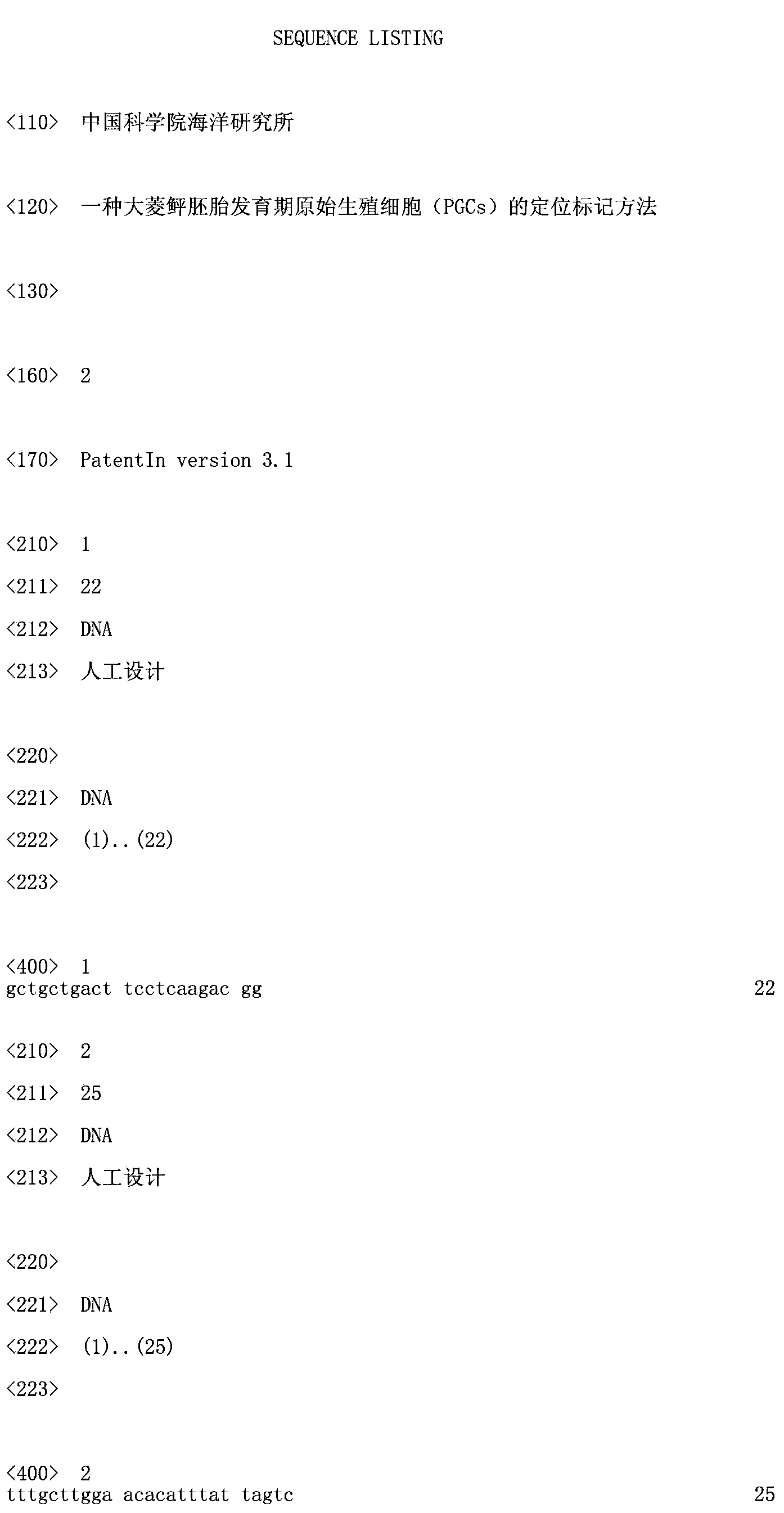Positioning marking method for primordial germ cells (PGCs) of scophthalmus maximus at embryonic development stage
A technology of primordial germ cells and positioning markers, applied in the field of PGCs positioning markers, can solve the problems of limiting the development of PGCs cryopreservation technology, unclear location and quantity of PGCs, inapplicable sampling and storage methods, etc., to achieve convenient collection and preservation process, Improve the permeability and facilitate the effect of going anywhere
- Summary
- Abstract
- Description
- Claims
- Application Information
AI Technical Summary
Problems solved by technology
Method used
Image
Examples
Embodiment 1
[0026] 1) Collect 1ml of embryo samples at each stage and place them in 15ml centrifuge tubes, then wash them twice with 1×PBST (DEPC treated) buffer, 5min each time;
[0027] 2) After washing, fix with 13ml of 1×PBST (DEPC treated) solution containing 4% (mass ratio) paraformaldehyde at 4°C for 24h;
[0028] 3) Then use 10ml of 1×PBST (DEPC treated) solution containing 50% (volume ratio) formamide to store at -20°C (long-term storage is possible).
[0029] 4) After fixation, take 30 embryos at different developmental stages and place them in 1×PBST (treated with DEPC) under a dissecting microscope to remove the membrane and yolk with tweezers;
[0030] 5) Take the embryos at different developmental stages without membranes and yolk into 1.5ml centrifuge tubes, wash with 1×PBST (DEPC treatment) for 3 times, each time for 5min; 1*PBST, 1×PBST containing 50% (volume ratio) methanol, 1×PBST containing 75% (volume ratio) methanol, each treated with gradient methanol for 5 minutes...
PUM
 Login to View More
Login to View More Abstract
Description
Claims
Application Information
 Login to View More
Login to View More - R&D
- Intellectual Property
- Life Sciences
- Materials
- Tech Scout
- Unparalleled Data Quality
- Higher Quality Content
- 60% Fewer Hallucinations
Browse by: Latest US Patents, China's latest patents, Technical Efficacy Thesaurus, Application Domain, Technology Topic, Popular Technical Reports.
© 2025 PatSnap. All rights reserved.Legal|Privacy policy|Modern Slavery Act Transparency Statement|Sitemap|About US| Contact US: help@patsnap.com


